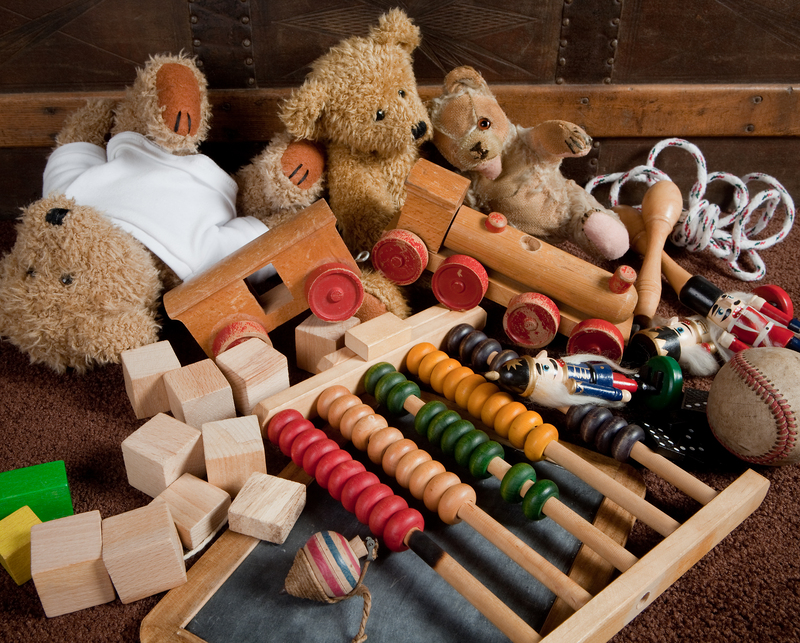Decoding Piano Moving: The Case Against a Solo Attempt
Posted on 18/05/2025
Decoding Piano Moving: The Case Against a Solo Attempt
Piano moving is often underestimated--many homeowners and music enthusiasts are tempted to relocate their beloved instrument themselves, believing that a little help and some muscle will suffice. However, this seemingly simple task comes with a host of hidden dangers and challenges. In this detailed guide, we'll unpack the complexities and risks of DIY piano moving, explaining why professional assistance is not just preferable but essential. If you're considering moving a piano by yourself, read on before making your final decision.

The Intricacies of Piano Moving Explained
Pianos are masterpieces of precision engineering and craftsmanship. From grand pianos gracing concert halls to compact uprights in cozy living rooms, every piano is a delicate balance of thousands of moving parts. The case, strings, hammers, pedals, and the frame are sensitive to even minor mishandling. Moving such a complex instrument safely is not merely a question of strength--it's a test of patience, expertise, and specialized-problem solving.
Understanding the Anatomy of Your Piano
- Weight Distribution: Standard upright pianos typically weigh between 300-500 lbs (136-226 kg), while grand pianos can exceed 1,200 lbs (544 kg). Weight is often unevenly distributed, with much of the mass located in the back or on the bass side.
- Fragile Components: The keys, pedals, legs, and lyre can break or deform with unexpected pressure. Even the exterior finish is vulnerable to scratches and chips.
- Internal Mechanics: The tension of the strings--up to 20 tons in a grand piano--creates a structurally complex and highly sensitive setup. Sudden movements can cause costly internal damage.
The Piano Move: Not Just A Heavy Lift
Unlike generic furniture, pianos need strategic planning and skillful handling. Moving a piano without professional help not only threatens the safety of the instrument but can lead to personal injury and property damage. There's a reason piano moving services exist as a specialized trade--it requires a sophisticated combination of experience, tools, and teamwork.
The Risks of Solo Piano Moving
1. Personal Injury
Attempting a solo piano relocation exposes you to serious injury risks, including:
- Muscle strains and back injuries: Lifting even parts of a piano incorrectly can result in severe musculoskeletal issues.
- Finger and toe injuries: One miscalculated move or slip can easily crush fingers or toes.
- Risk of falls: Navigating stairs or tight corridors with a heavy and unwieldy instrument heightens the potential for slips and falls.
Even with helpers, unless everyone is trained and coordinated, accidents are common.
2. Property Damage
Beyond your personal well-being, your floors, walls, door frames, and stairways are all at risk. DIY piano movers often underestimate the space needed to maneuver pianos and the force exerted during transit. Some of the frequent mishaps include:
- Deep scratches and gouges in wood floors or tile damage
- Broken stair banisters or damaged drywall
- Dented doors and misaligned frames
Repairs for such damages often exceed the costs of professional piano moving services.
3. Piano Damage Itself
Perhaps most heartbreaking is the potential to damage the instrument. Pianos are not only financially expensive, but they often hold immense sentimental value. DIY attempts can lead to:
- Cracked or warped frames
- Snapped strings and broken hammers
- Marred wood finish and chipped keys
- Long-term tonal issues from changes in alignment
Professional piano movers understand how to disassemble, pack, and transport pianos with precision, preserving their form and function.
Special Challenges Associated With Piano Types
Grand Pianos vs. Upright Pianos
Piano moving techniques vary with instrument size and structure. Here's a quick breakdown:
- Upright Pianos: Compact but top-heavy, which makes them prone to tipping. Their height demands unique strap and dollie positions to prevent wobbling during stair descents.
- Grand Pianos: Require partial disassembly (removal of legs, pedals, lid, and lyre). They must be placed on a customized skid board and secured with padded straps. Reassembly demands expertise to ensure no pieces are damaged or misplaced.
Each type presents unique hazards--another reason to avoid solo attempts.
Challenging Locations
Moving a piano is especially fraught when the instrument is in:
- A multi-story home with narrow staircases
- Rooms with tight doorways and hallways
- Apartment buildings with limited elevator access
- Outside stairs or uneven ground
These scenarios require careful planning, specific tools, and often, many hands working in concert--all factors best managed by a professional piano moving company.
Tooling Up: The Professional Edge
The Right Equipment Makes All the Difference
While it might be tempting to save costs by renting a generic moving truck and recruiting friends, professionals use a suite of dedicated tools designed solely for pianos. These include:
- Piano dollies and skids - for secure, balanced movement
- Stair-climbing carts - to minimize lifting and control
- Moving straps and harnesses - for preventing accidental drops
- Padded covers and shrink wrap - to guard against scratches
- Custom ramps - for negotiating entryways and staircases
Most homeowners do not own, nor know how to use, this equipment. Misusing standard moving gear can result in calamity.
Transportation and Climate Considerations
Pianos are sensitive to temperature and humidity fluctuations. Professional piano movers use climate-controlled vehicles and coordinate moves to minimize exposure to adverse weather--factors a DIY mover may not be able to control.
The Value of Professional Piano Movers
What Sets The Pros Apart?
In addition to their specialist tools and training, reputable piano moving professionals offer:
- Comprehensive insurance - protection for your instrument and your home during the move
- Licensing, experience, and credentials - assurance the crew has faced (and solved) every moving challenge before
- Efficient coordination - with planning, communication, and teamwork, the process is smooth and speedy
- Expert reassembly and tuning - ensuring your piano is playable and beautiful at its new home
This combination of resources is rarely, if ever, matched by amateur efforts.
Long-Term Maintenance and Peace of Mind
With professional piano moving, you're investing in the long-term health of your instrument. A botched move can introduce subtle misalignments or unnoticed damage that may degrade your piano's sound and touch over time. Professionals stand behind their work, giving you confidence and the freedom to focus on enjoying your music, not worrying about repairs.
Piano Moving Myths: Debunked
"It's just like moving furniture!"
Unlike sofas or tables, pianos have a unique balance, weight, and fragility. Treating a piano like standard furniture is a recipe for disaster. Each instrument requires a customized approach that takes into account its mechanics, finish, and architecture.
"Two strong people can handle an upright with no problem."
Even for upright pianos, sheer strength is insufficient. Without knowledge of pivot points, load distribution, and safe lifting protocols, you risk catastrophe. Professional movers assign tasks based on training and team dynamics, reducing risk dramatically.
"DIY is the only way to save money."
On the surface, a solo piano move seems economical. But when you consider the potential costs of injury, repairs, or replacement, hiring a pro almost always represents the smarter financial choice--one that also spares you stress and heavy lifting.
How to Choose the Right Piano Moving Company
Key Considerations for Hiring Professionals
- Experience: Look for companies specializing in pianos, with years (ideally decades) of demonstrated success.
- Insurance and Licensing: Ensure full coverage for both the instrument and property.
- References and Reviews: Seek out feedback from other customers, especially regarding difficult or complex moves.
- Transparent Pricing: Reliable movers offer detailed quotes with no hidden fees.
- Consultation and Planning: The best companies discuss your move in detail, inspect the piano if necessary, and strategize accordingly.
Tip: A quality company treats your piano as a cherished, valuable asset, not just another bulky item to be hauled.
Before The Move: Preparation Tips
Get Ready the Right Way
- Clear the path between the piano and all exits
- Remove obstacles like rugs, furniture, and fragile decor
- Secure pets and inform neighbors, if necessary
- Take photos of your piano before the move to document its condition
- Communicate with your moving team about building access, stairs, and any possible complications
Proper preparation ensures a smooth, damage-free experience for you and your piano.

After the Move: Restoring Your Piano
Post-Move Piano Care
Once your piano is safely situated, it's wise to allow it to acclimatize to its new setting. Changes in environment can affect tuning and touch. Consider scheduling a professional tuning and inspection a few weeks after your move to ensure optimal performance.
Conclusion: Trust the Experts for Piano Relocation
While moving a piano might appear manageable at first glance, the truth is far more nuanced. The case against solo piano moving is compelling: the risks to your health, your home, and your instrument far outweigh the short-term perceptions of convenience or savings.
Professional piano movers bring a level of skill, care, and preparation that simply can't be replicated by well-intentioned amateurs. Your piano is more than a piece of furniture--it's a vessel of musical expression, memory, and investment. Safeguard it by leaving your next move in the hands of those who truly know how to decode and manage every nuance of piano moving.
Ready to move your piano? Think twice before you go solo. Choose a dedicated piano mover and hit all the right notes, from start to finish.





